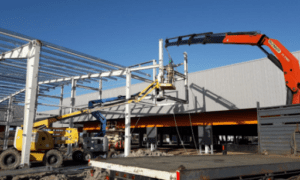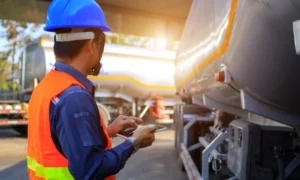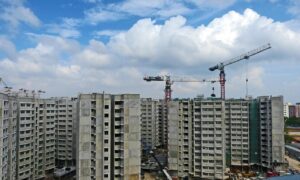Accurate material estimating is the backbone of every successful construction project, especially when it comes to lumber. Inaccurate calculations can lead to costly overages, delays, or material shortages that slow progress and impact profitability. With increasing project complexity and fluctuating lumber prices, contractors must rely on precise takeoffs to stay competitive. This is where lumber estimating services come into play, offering detailed, data-driven insights that improve planning and reduce waste. One such solution is available through professional lumber takeoff services, which streamline project execution and offer peace of mind.
Why Lumber Estimation Matters in Modern Construction
Cost Control and Budget Accuracy
A detailed lumber takeoff ensures that contractors and builders know exactly what quantities of wood are needed for a specific job. Without this, estimating errors can either inflate the budget or lead to mid-project purchases at premium prices. Using a precise lumber takeoff keeps the project within budget from day one.
Reducing Waste and Overordering
Overestimating lumber can result in unused materials that drive up storage and disposal costs. Conversely, underestimating can delay timelines due to material reordering. Accurate estimates help strike the perfect balance between supply and demand, which is crucial in high-efficiency builds like prefabricated homes or commercial framing.
Improving Project Scheduling
Lumber takeoffs are not just about counting studs and beams — they’re integral to scheduling deliveries and labor allocation. With correct numbers in hand, project managers can plan deliveries, reduce downtime, and keep subcontractors working without interruptions.
Key Elements of a Lumber Takeoff
Framing Lumber
Framing constitutes the bulk of most residential and commercial structures. Estimating this correctly requires understanding the structural plan and factoring in lengths, cuts, and framing patterns. Misjudging this can cause structural weakness or unnecessary expense.
Sheathing and Subflooring
Sheathing provides a base for walls, roofs, and floors. Estimating plywood, OSB, or other panel products involves calculating square footage and compensating for waste due to cuts or overlaps.
Finish Carpentry Materials
From baseboards to crown molding, trim material must also be included in lumber takeoffs. These finishes are crucial for client satisfaction and must be measured accurately to avoid on-site surprises.
Connectors and Fasteners
Even though nails, hangers, and brackets are small, they make up a critical part of any lumber takeoff. Forgetting them or underestimating can stall progress, especially during framing inspections or code compliance.
Common Challenges in Lumber Estimating
Plan Complexity
Modern blueprints are layered and detailed, often requiring software and industry knowledge to interpret. Human error in reading these plans leads to flawed estimates, which ultimately affect every phase of construction.
Material Fluctuation
Prices for lumber can change rapidly due to market conditions. Estimators need to factor in this volatility and often include pricing buffers or escalation clauses in bids.
Manual Takeoffs
While traditional pen-and-paper takeoffs are still used by small contractors, they are highly time-consuming and error-prone. Digital tools and outsourcing to experts improve accuracy and free up valuable hours.
Benefits of Outsourcing Lumber Takeoffs
Expertise and Accuracy
Companies offering dedicated lumber takeoff services bring years of experience and cutting-edge tools to the table. Their insight allows contractors to quote more competitively and win bids without sacrificing margin.
Time-Saving
Time is money, especially in construction. Outsourcing estimation frees project managers to focus on operations, client relationships, and growth instead of poring over blueprints for hours.
Scalable for Any Project Size
Whether you’re building a single-family home or a commercial complex, outsourced estimating services scale to fit your project, ensuring efficiency without hiring in-house staff.
The Role of Technology in Modern Estimating
Today’s estimation firms use software like PlanSwift, Bluebeam, and On-Screen Takeoff to generate fast, accurate numbers. These tools allow teams to collaborate in real time, update estimates as drawings change, and avoid delays caused by outdated data. Integration with project management systems also means takeoffs can become part of a unified workflow, improving transparency from estimating to procurement.
Conclusion
As the construction industry becomes increasingly competitive and complex, accurate lumber takeoffs are no longer optional — they are essential. By partnering with experienced professionals offering lumber takeoff services, contractors can minimize guesswork, maximize efficiency, and keep projects on track. The right takeoff strategy ensures not only a well-planned build but a smoother journey from blueprint to final inspection.
FAQs
1. What is included in a lumber takeoff?
A lumber takeoff typically includes framing materials, sheathing, subflooring, connectors, and finish carpentry quantities based on architectural and structural drawings.
2. Can I do my own lumber takeoff without software?
Yes, but it’s time-consuming and prone to error. Software or professional services improve both speed and accuracy, especially for complex or large-scale projects.
3. How does outsourcing lumber estimating help my business?
It saves time, improves accuracy, and allows you to scale your operations without hiring a full-time estimator.
4. Are lumber takeoff estimates adjusted for market prices?
Professional estimators often provide current pricing or include variables to accommodate market fluctuations, helping you prepare more realistic bids.
5. Do I need different takeoffs for residential and commercial projects?
Yes. Commercial projects often require more complex materials and structural components, so takeoffs must be tailored accordingly.



































